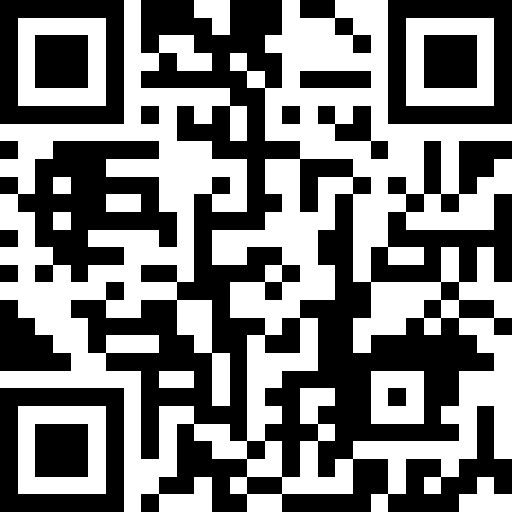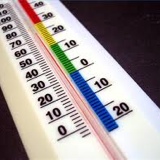Title Page
-
Add media
-
-
Client Name:
-
Address:
-
Date of Assessment:
-
Recommended Review Date:
-
Date of Previous Assessment:
-
Name of Assessor:
General Information About the Site
Person(s) Consulted
-
Responsible Person:
-
Person(s) Consulted on site:
-
Position:
-
Email Address:
-
Tel No:
-
Premises Details
-
Premises Description:
-
Number of Floors (including basement):
-
Premises Use:
-
Introduction
-
Fire doors are an essential part of passive fire protection because they help prevent fire and smoke from spreading between rooms or compartments and into escape routes.
By holding back the spread of fire and smoke into and along escape routes, occupants have more time to evacuate or reach a refuge, and crucially their escape route is much safer.
A door’s effectiveness relies on more than just the door leaf itself. There are many component parts working together to resist fire – the failure, poor specification, or incorrect installation of any one item could compromise the whole door
assembly.
Nominal Fire Doors
A nominal fire door is a door that may not be certified but is thought to meet fire safety standards. They are also known as "notional" fire doors.
Nominal fire doors are not officially certified by a third-party testing unit. Certified fire doors have been tested and meet current fire safety standards.
Nominal fire doors may be:
• Older doors that may not have a manufacturer's label or plug.
• Doors that have been in place for a long time and met earlier standards.
• Doors that are installed into an uncertified frame.
• Doors that have been altered by adding glazing, letterboxes, or ventilation grilles.
A nominal fire door can be identified by:
• A fire door inspector can examine the door and determine if it is suitable.
• The door's construction, such as the thickness of the timber, can indicate its fire resistance. -
Legislation
The main fire safety legislation for each UK country requires that the ‘facilities, equipment, and devices’ (i.e., fire doors and flat front doors) are ‘subject to a suitable system of maintenance’ (i.e., ongoing inspection and repair).
• Regulatory Reform (Fire Safety) Order 2005
• Fire (Scotland) Act 2005
• The Fire Safety (Scotland) Regulations 2006
• Fire Safety Regulations (NI) 2010
These fire safety laws are for England / Wales, Scotland, and Northern Ireland. They include inspecting and maintaining building safety and ongoing risk assessments.
• Fire Safety Act 2021
This extends English fire safety law to include all buildings with two or more domestic premises. It explicitly brings into scope flat front doors. -
Guidance
A variety of British and European standards apply to fire door assemblies, their component parts and fire tests applied to them.
• BS EN 1634-1:2008 Fire resistance and smoke control tests for doors, shutters and openable windows.
• BS 476-22:1987 Fire tests on building materials and structures.
• BS 8214:2016 Code of practice for fire door assemblies.
• BS EN 1125:2008 Building hardware – panic exit devices.
• BS EN 1935:2002 Building hardware – single-axis door hinges.
• BS EN 1155:1997 Building hardware – Electro-magnetic devices.
Methodology
-
Each fire door is inspected individually by one of our fire door inspectors in accordance with the guidance as set out by the National Association of Fire Doors Inspectors.
Safetyform have applied a "Status" criterion to each door inspected to determine the level of compliance with the requirements of BS 476 - Pt 22, which are:
• Compliant - Meaning the door is compliant to the requirements of BS 476 - Pt 22 and no further actions are required.
• Compliant (Nominal) - Meaning the door is compliant as a Nominal Fire Door in the opinion of the fire door inspector.
• Improvements Required - Meaning the door requires improvements to be made to comply with the requirements of BS 476 - Pt 22. Where improvements have been identified they will be listed within the inspection and the required improvements should be made within 3 months of the inspection date or sooner if the inspector has given an earlier timeframe.
• Non-Compliant - Meaning the door does not comply with the requirements of BS 476 - Pt 22 and will require replacement at the earliest convenience to ensure compliance with the requirements of BS 476 - Pt 22.
Please Note:
In line with the requirements of the Fire Safety (England) Regulations 2022, all fire doors must be inspected on a regular basis (at least once every 12 months or 6 months in high-traffic areas), to ensure they remain free from damage and are fit for purpose, this includes for individual flat entrance doors.
Communal Fire Door Inspections
- CFD:
-
Door Photo:
-
Location of fire door in the building?
-
Fire Door Type / Rating etc.
- Door Types:
- Single Door Single Swing 90 Degrees
- Double Door Single Swing 90 Degrees
- Double Pair of Doors
- Sliding Door
- Door Fire Ratings (S = with Seals):
- FD30
- FD30S
- FD60
- FD60S
- FD90
- FD90S
- FD120
- FD120S
- 44mm Thick
- 54mm Thick
- Door Materials:
- Timber
- Composite
- Glass
- Steel
- Fire Door Stickers or Plugs (Yellow-FD30, Blue-FD60, Brown-FD90, Black-FD120):
- No Q-Mark Plug or BWF Certifire Label fitted to door.
- BWF Certifire Label fitted.
- Fire Door rating sticker present on top of door.
- Fire Door rating plug present on door.
- Yellow FD30 Plug Fitted.
- Blue FD60 Plug Fitted.
- Brown FD90 Plug Fitted.
- Black FD120 Plug Fitted.
-
-
Fire Door Compliance status with the requirements of BS476 Pt 22?
- Compliant
- Compliant (Nominal)
- Improvements Required
- Non-Compliant
- No Access at the time of Assessment
-
Please see break down below for reasons why the door is not compliant or requires improvements to comply with the requirements of BS476 Pt 22. Improvements must be made within a reasonable timeframe (i.e. 3 months).
-
Door & Frame:
- Gaps between door and frame on all sides exceed 5mm or more.
- Gaps between door and frame on the non-hinge side exceed 5mm or more.
- Gaps between door and frame on the hinge side exceed 5mm or more.
- Gaps between door and frame at the top of the door exceed 5mm or more.
- The threshold gap to the bottom of the door exceeds 10mm and has no threshold seal fitted.
- The threshold gap exceeds5mm with a threshold seal fitted.
- Gaps between the two double doors when closed exceeded 5mm or more.
- The door appeared to be catching on the door frame and not closing fully into the frame under its own weight.
- The door was seen to be twisted when fully closed into the frame causing gaps.
- The door was seen to be damaged.
- The door frame was seen to be damaged.
- The door frame was seen to be loose and not secured.
- The area around the door frame did not appear to be fully fire stopped.
- Other (see below)
-
Please State other issues identified:
-
Seals:
- Fire Seals to doors:
- Seals not fitted to the door in any location.
- Seals missing on the hinge side of the door.
- Seals missing on the non-hinge side of the door.
- Seals missing on the top side of the door.
- Seals seen to be damaged.
- Other (see below)
-
Please state other issues identified:
-
Door Closer:
- The door closing device does not appear to be compliant to the BS EN 1154 standard.
- A door closer device is not fitted to door.
- The door closer device was seen to be damaged.
- The door closer device was seen to be leaking excessively.
- The door slams shut into the frame too fast under its own weight & requires adjustment to the door closer.
- The door closer device does not close the door fully into the frame under its own weight.
- The door closer takes longer than the recommended 25 seconds to close from fully open to fully closed.
- The door closer/sorter was seen not to be closing the double doors in the correct order.
- The door closer/sorter was seen not to be closing one the double doors fully into its frame under its own weight.
- The door closer device does not close both doors fully into their frame under their own weight.
- Other (see below)
-
Please state other issues identified:
-
Door Hinges, Locks & Latches & Door Furniture:
- There are only two hinges fitted to the fire door.
- Door hinges do not appear to be CE marked or fire rated.
- Hinges do not appear to be made of either steel, brass of phosphor bronze.
- Screws were seen to be missing from the hinges.
- Hinges were seen to be suffering from excessive leaking.
- Hinges were seen to be damaged.
- The door lock/latch does not appear to be tested to BS EN 12209 standards.
- the door lock was seen to be damaged.
- The door lock/latch does not close the door firmly into position and had excessive movement when fully closed.
- The letter box did not appear to be tested to the BS 476 Part 22 (1987) and EN 1634-1 (2000) standards.
- The letter box did not have an intumescent seal fitted.
- The letter box was seen to be damaged.
- The letter box was missing its front cover.
- The Ventilation / Air Transfer grilles were not seen to be fire rated or have intumescent blocks fitted.
- The Ventilation / Air Transfer grilles do not appear to be tested to the BS EN 1634 standard.
- The Ventilation / Air Transfer grilles were seen to be damaged.
- Other (see below)
-
Please state other issues identified:
-
Door Signage:
- A Fire Door Keep Shut sign was missing from one side of the door.
- Fire Door Keep Shut signs were missing from both sides of the door.
- A Fire Door Keep Locked sign was missing from the front of the door.
- A Fire Exit Keep Clear sign was missing from back of door.
- A Danger of Electricity of High Voltage sign was missing from the front of the door.
- Other (see below)
-
Please state other issues identified:
-
Glazing & Apertures:
- Glazing
- The glazing within the door does not appear to be fire rated to the (BS476-22 / BS EN 1634-1) standard.
- The glazing within the door was seen to be cracked.
- the glazing within the door was seen to be damaged.
- The glazing's intumescent seal was seen not to be continuous and did not form a full seal between the glass and beading.
- Aperture.
- The glazing beads were seen to be damaged around the glazed panel.
- The glazing beads were seen to be missing in part around the glazed panel.
- Other (see below)
-
Please state other issues identified:
-
Associated Photographs:
-
The door was inspected in line with the criteria set out by the National Association of Fire Door Inspectors (NAFDI) and was found to compliant to the requirements of the British Standard - BS476 Pt 22.
-
No access was gained to the door at the time of the assessment to ascertain if the door is compliant with the requirements of BS476 Pt 22.
The Client should arrange for access at a later date so as to inspect the door for compliance with the requirements of BS476 Pt 22. -
The door was inspected in line with the criteria set out by the National Association of Fire Door Inspectors (NAFDI) and was found to compliant as a Nominal Fire Door in the opinion of the fire door inspector.
Flat Entrance Fire Door Inspections
- FED:
-
Door Photo:
-
Location of fire door in the building?
-
Fire Door Type / Rating etc.
- Door Types:
- Single Door Single Swing 90 Degrees
- Double Door Single Swing 90 Degrees
- Double Pair of Doors
- Sliding Door
- Door Fire Ratings (S = with Seals):
- FD30
- FD30S
- FD60
- FD60S
- FD90
- FD90S
- FD120
- FD120S
- 44mm Thick
- 54mm Thick
- Door Materials:
- Timber
- Composite
- Glass
- Steel
- Fire Door Stickers or Plugs (Yellow-FD30, Blue-FD60, Brown-FD90, Black-FD120):
- No Q-Mark Plug or BWF Certifire Label fitted to door.
- BWF Certifire Label fitted.
- Fire Door rating sticker present on top of door.
- Fire Door rating plug present on door.
- Yellow FD30 Plug Fitted.
- Blue FD60 Plug Fitted.
- Brown FD90 Plug Fitted.
- Black FD120 Plug Fitted.
-
-
Fire Door Compliance status with the requirements of BS476 Pt 22?
- Compliant
- Compliant (Nominal)
- Improvements Required
- Non-Compliant
- No Access at the time of Assessment
-
Please see break down below for reasons why the door is not compliant or requires improvements to comply with the requirements of BS476 Pt 22. Improvements must be made within a reasonable timeframe (i.e. 3 months).
-
Door & Frame:
- Gaps between door and frame on all sides exceed 5mm or more.
- Gaps between door and frame on the non-hinge side exceed 5mm or more.
- Gaps between door and frame on the hinge side exceed 5mm or more.
- Gaps between door and frame at the top of the door exceed 5mm or more.
- The threshold gap to the bottom of the door exceeds 10mm and has no threshold seal fitted.
- The threshold gap exceeds5mm with a threshold seal fitted.
- Gaps between the two double doors when closed exceeded 5mm or more.
- The door appeared to be catching on the door frame and not closing fully into the frame under its own weight.
- The door was seen to be twisted when fully closed into the frame causing gaps.
- The door was seen to be damaged.
- The door frame was seen to be damaged.
- The door frame was seen to be loose and not secured.
- The area around the door frame did not appear to be fully fire stopped.
- Other (see below)
-
Please State other issues identified:
-
Seals:
- Fire Seals to doors:
- Seals not fitted to the door in any location.
- Seals missing on the hinge side of the door.
- Seals missing on the non-hinge side of the door.
- Seals missing on the top side of the door.
- Seals seen to be damaged.
- Other (see below)
-
Please state other issues identified:
-
Door Closer:
- The door closing device does not appear to be compliant to the BS EN 1154 standard.
- A door closer device is not fitted to door.
- The door closer device was seen to be damaged.
- The door closer device was seen to be leaking excessively.
- The door slams shut into the frame too fast under its own weight & requires adjustment to the door closer.
- The door closer device does not close the door fully into the frame under its own weight.
- The door closer takes longer than the recommended 25 seconds to close from fully open to fully closed.
- The door closer/sorter was seen not to be closing the double doors in the correct order.
- The door closer/sorter was seen not to be closing one the double doors fully into its frame under its own weight.
- The door closer device does not close both doors fully into their frame under their own weight.
- Other (see below)
-
Please state other issues identified:
-
Door Hinges, Locks & Latches & Door Furniture:
- There are only two hinges fitted to the fire door.
- Door hinges do not appear to be CE marked or fire rated.
- Hinges do not appear to be made of either steel, brass of phosphor bronze.
- Screws were seen to be missing from the hinges.
- Hinges were seen to be suffering from excessive leaking.
- Hinges were seen to be damaged.
- The door lock/latch does not appear to be tested to BS EN 12209 standards.
- the door lock was seen to be damaged.
- The door lock/latch does not close the door firmly into position and had excessive movement when fully closed.
- The letter box did not appear to be tested to the BS 476 Part 22 (1987) and EN 1634-1 (2000) standards.
- The letter box did not have an intumescent seal fitted.
- The letter box was seen to be damaged.
- The letter box was missing its front cover.
- The Ventilation / Air Transfer grilles were not seen to be fire rated or have intumescent blocks fitted.
- The Ventilation / Air Transfer grilles do not appear to be tested to the BS EN 1634 standard.
- The Ventilation / Air Transfer grilles were seen to be damaged.
- Other (see below)
-
Please state other issues identified:
-
Door Signage:
- A Fire Door Keep Shut sign was missing from one side of the door.
- Fire Door Keep Shut signs were missing from both sides of the door.
- A Fire Door Keep Locked sign was missing from the front of the door.
- A Fire Exit Keep Clear sign was missing from back of door.
- A Danger of Electricity of High Voltage sign was missing from the front of the door.
- Other (see below)
-
Please state other issues identified:
-
Glazing & Apertures:
- Glazing
- The glazing within the door does not appear to be fire rated to the (BS476-22 / BS EN 1634-1) standard.
- The glazing within the door was seen to be cracked.
- the glazing within the door was seen to be damaged.
- The glazing's intumescent seal was seen not to be continuous and did not form a full seal between the glass and beading.
- Aperture.
- The glazing beads were seen to be damaged around the glazed panel.
- The glazing beads were seen to be missing in part around the glazed panel.
- Other (see below)
-
Please state other issues identified:
-
Associated Photographs:
-
The door was inspected in line with the criteria set out by the National Association of Fire Door Inspectors (NAFDI) and was found to compliant to the requirements of the British Standard - BS476 Pt 22.
-
No access was gained to the door at the time of the assessment to ascertain if the door is compliant with the requirements of BS476 Pt 22.
The Client should arrange for access at a later date so as to inspect the door for compliance with the requirements of BS476 Pt 22. -
The door was inspected in line with the criteria set out by the National Association of Fire Door Inspectors (NAFDI) and was found to compliant as a Nominal Fire Door in the opinion of the fire door inspector.
Signatories
-
Following the assessment and before leaving the building, Safetyform carried out a debriefing session with the client contact to discuss the fire door inspection findings and any actions required to be taken where required.
-
We, the signatories below, confirm that a Fire Door Inspection was undertaken at the above-named premises on the date below and that a formal debriefing session was undertaken between Safetyform & the client contact.
-
-
Client Contact:
-
-
Fire Door Assessor on behalf of Safetyform:
-
-
Date:
Consultant Notes & Photographs
-
As part of the BAFE accreditation it is required that all fire risk assessors keep copies of their notes taken on site and any associated photographs applicable to the building.
Therefore, to ensure our compliance with the BAFE requirements, please upload any notes taken at the time of undertaking the fire risk assessment (these can be photographs of hand written notes or notes formulated using Word or Excel).
The Notes must be legible so they can be read when being audited.
In addition, please upload all photographs taken of the property when visited, whether used in the report or not. -
Upload Notes Here:
-
-
Upload Photographs Here:














